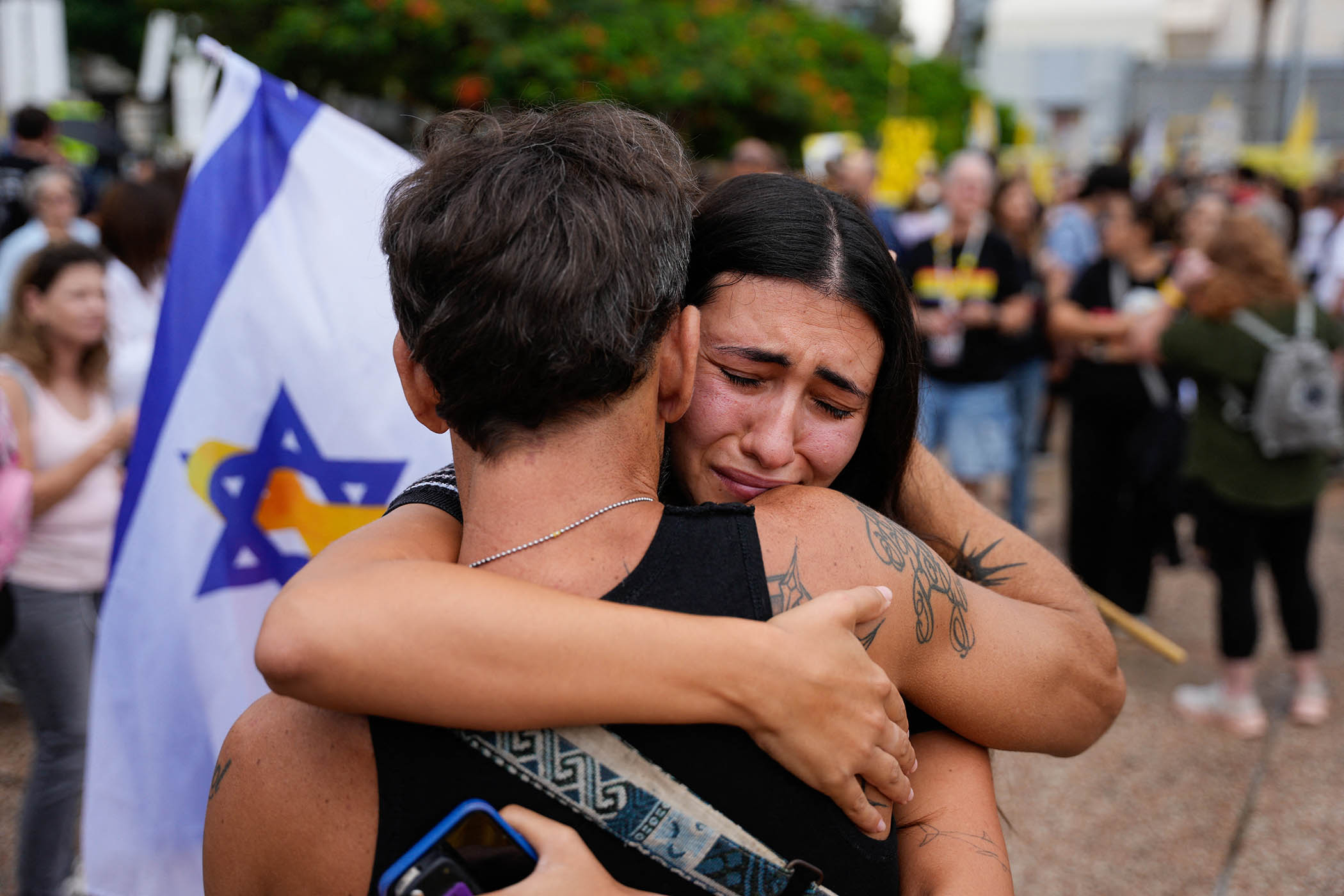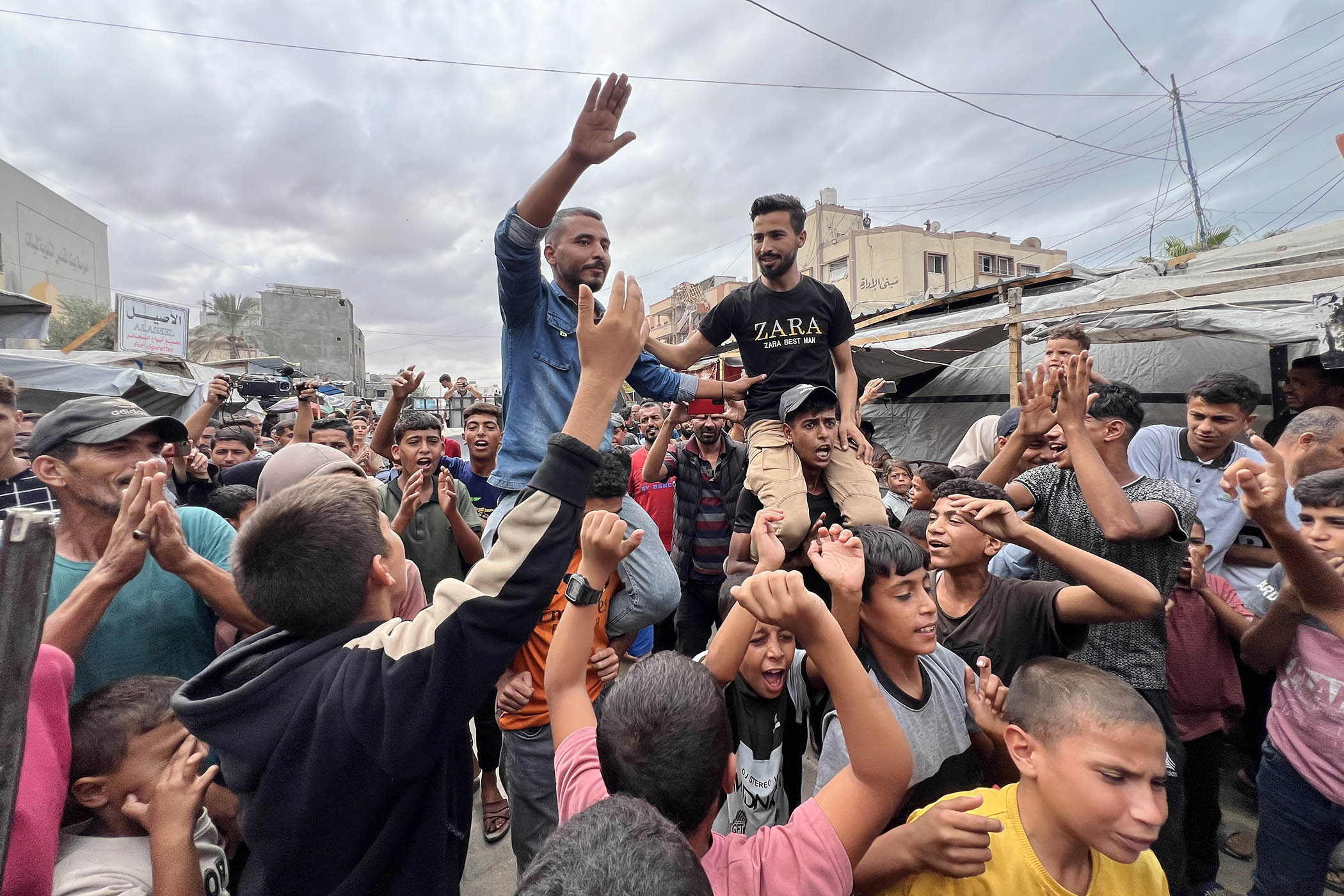After two years of Israeli assault on Gaza, the announcement of a ceasefire deal came not from the negotiations in the Egyptian resort of Sharm el-Sheikh, but from the White House.
US president Donald Trump took to social media to announce the broad terms of the deal: the return of all 48 remaining hostages held in Gaza – living and dead – and that Israeli troops will withdraw to an “agreed upon line as the first steps toward a Strong, Durable, and Everlasting Peace,” he wrote.
Amid celebrations, a group representing the families of hostages held in Gaza said they were desperately awaiting results: “It’s not over until everyone comes home.”
Since Trump and Israeli prime minister Benjamin Netanyahu stood side by side at the White House to announce the resumption of peace talks, the result was seen as an ultimatum for Hamas. While the first round of the ceasefire deal is expected to free some 2,000 Palestinian prisoners held in Israeli jails and bring a desperately needed halt to the fighting in Gaza, there are few specifics on how this agreement might produce a durable peace.
Indirect negotiations in Sharm el-Sheikh are set to continue on far thornier issues about Gaza’s future, including reconstruction and who will rule over the rubble of the enclave. The outcome will determine both Gaza’s future – and that of Hamas.
“Things are going to be much different in the Middle East, but things are going to be different all over the world,” Trump told Fox News.
Netanyahu also sought to claim victory, describing the agreement as “a diplomatic success and a national and moral victory for the state of Israel”, after two years of pledging to eliminate Hamas and ensure it plays no future role in Gaza.
Just three weeks ago, he had pledged to strike the Hamas leadership “wherever they are”, in his speech to the UN general assembly, following an Israeli airstrike that targeted Hamas negotiators in Doha. Now the targets of that strike, notably chief negotiator Khalil al-Hayya, re-emerged in Sharm el-Sheikh to conduct peace talks with the men who tried to kill them.
“For Hamas, the key issue is that Israel went to extraordinary lengths to wipe out the negotiating team – but they consider it an achievement that Israel is now having to reach a conclusion to this war by negotiating with exactly the same team that they failed to kill,” said Mouin Rabbani, a non-resident senior analyst at the Middle East Council on Global Affairs in Doha.
Despite this symbolic success, many key problems remain unresolved. Hamas, in a statement, praised the results but called on Trump and other supporting countries to ensure that Israel adheres to the agreement to ensure a long-lasting end to the fighting.

People in Hostage Square, Tel Aviv react to the ceasefire agreement.
The group said that “our people’s sacrifices will not be in vain, and that we will remain faithful to our pledge and will not abandon our people’s national rights: to achieve freedom, independence, and self-determination”.
Even with the growing international support for an independent Palestinian state and Trump’s 20-point plan for Gaza’s future, there are few indications as to what that future could look like, particularly as Hamas has long said it has no interest in ruling the enclave.
“From the perspective of the movement, it makes a kind of sense: why would they want to be in charge of the heap of rubble that is the Gaza Strip and take responsibility for its reconstruction and services,” said Rabbani.
‘Why would Hamas want to be in charge of the heap of rubble that is the Gaza Strip?’
Mouin Rabbani, analyst
The core issue, he argued, is whether Hamas agrees to the authority that replaces them in Gaza. “The mere fact that Hamas is sitting in the room means that anything agreed will be as a result of their consent: that is for them the key issue. It shows they’re still a relevant political factor in terms of deciding the future of the Gaza Strip.”
Convincing Hamas’s military wing, the al-Qassam brigades, and a new generation of increasingly battle-hardened fighters to accept any long-term deal is now the task of Hayya. Tahani Mustafa, of the European Council of Foreign Relations, believes that the 64-year-old’s deep roots in Gaza and his unique ability to balance Hamas’s military and political wings, make Hayya well-placed for the task.
“We’re seeing Hamas fragment internally,” Mustafa said. “There’s an entire tapestry now made up of these fragments, primarily inside Gaza rather than outside – this is a predicament that Hayya and [Hamas West Bank military leader] Husam Badran are facing in terms of the negotiations.”
Israel’s two-year onslaught on Gaza has wiped out the majority of the old guard inside Gaza, while a campaign of assassinations across the Middle East has taken out many senior figures. The result, said Mustafa, is a widening gap between those on the ground living among the rubble of Gaza and the leadership in exile.
“Whatever the external leadership decides has to fly with those internally in Gaza,” she said. “Someone like Hayya or Badran, they are better placed from the external side of the movement to negotiate something palatable to those internally.”
Photographs by Abed Rahim Khatib/Anadolu; Maya Levin/AFP via Getty

